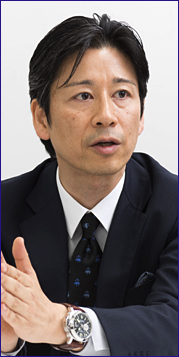

Focusing on the Spaces between Buildings
Most urban space consists of areas between buildings. In general, a city is often considered to be an aggregation of buildings, but the true nature of urban design lies in specialized research to determine how spaces between buildings can be altered in order to enrich urban space and contribute to people's lives.For example, in order to enhance the quality of a street's urban space, design optimized to support people's lifestyles must be pursued, which includes factors such as land use for buildings facing the street and relationships between the buildings and the street. If the street is part of a business district, the space is designed in a way that motivates creative businesspeople to work.
Strategic Combination with City Planning
Many people believe that cities built up over decades cannot be easily changed. Therefore, it is important to demonstrate the fact that cities can be changed through design of public spaces. By utilizing a combination of urban design and city planning, it becomes entirely possible to change a city. In other words, strategic urban planning is not merely an academic discipline—it also possesses high practical applicability.Next April the Department of Architecture of the School of Science and Technology will begin the International Program in Architecture and Urban Design at the Nakano Campus, which will educate students on international architecture and urban design. All classes in this highly ambitious educational program will be held in English, providing a venue for both Japanese and foreign students to learn together.
Doing Away with the Concept of National Borders
Because education in International Program in Architecture and Urban Design relates to cities, the catch phrase "Cultivating Architects Who Transcend Borders" has been applied to the program in reference to its disposal of the concept of national borders. We want to send out as many young professionals into the world as possible to cultivate urban spaces for the future.Profile
Associate Professor, Department of Architecture, Meiji University School of Science and TechnologyBorn in 1963 in Kanagawa Prefecture. After graduating in 1985 from the Department of Architecture, Faculty of Engineering, the University of Tokyo, Sasaki worked at a general contracting company and then went on to complete his master's degree in 2001 at the University of California, Berkeley's Department of City and Regional Planning. He then worked as a principal for a San Francisco-based urban design office, began serving as an associate professor at Kobe Design University in 2008 (currently a special associate professor), and joined Meiji University in 2011. Sasaki presides over FTS Urban Design. He is a first-class registered architect and a member of the American Institute of Certified Planners (AICP), and he has completed his Ph.D. (design engineering).









